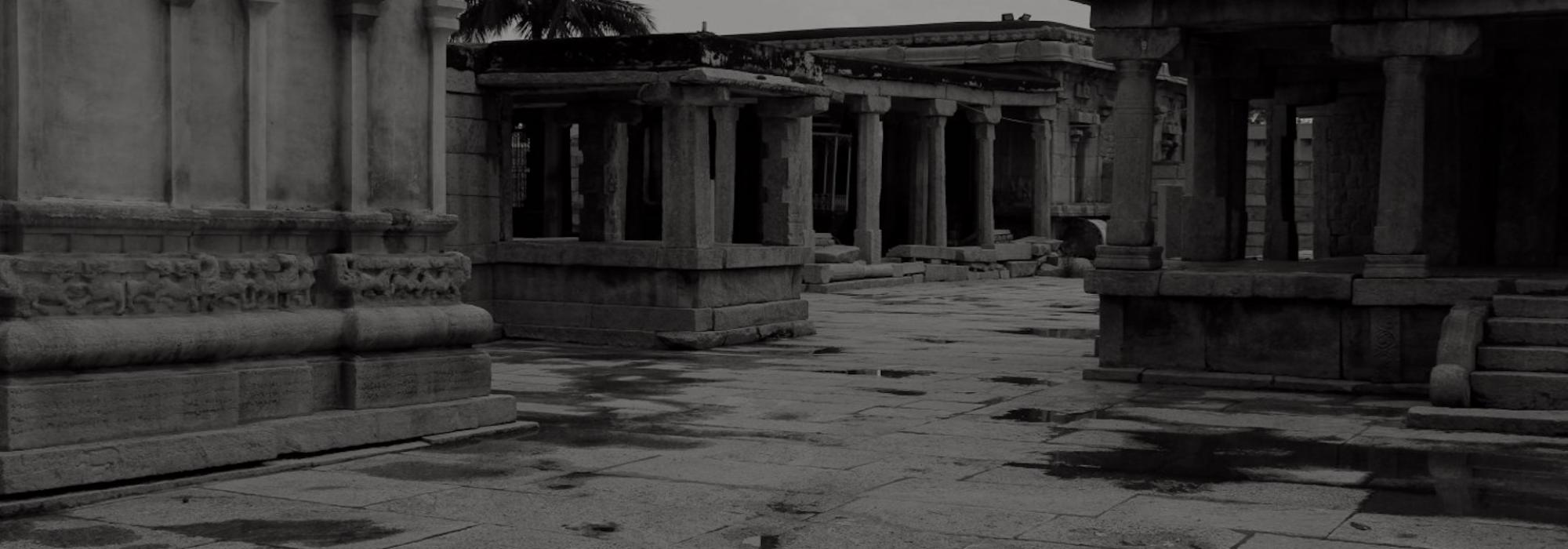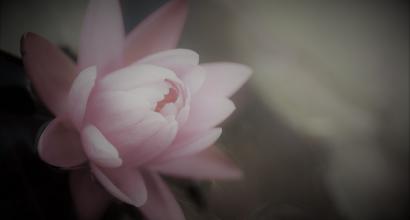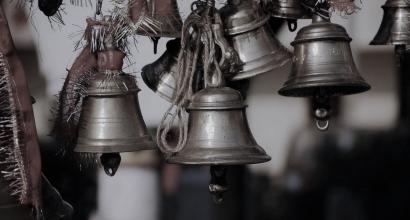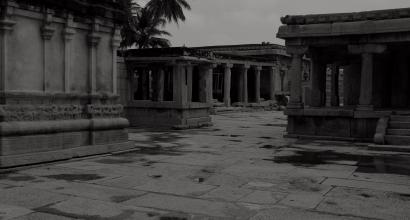Sonnavadi is a small village. It might have originally been called Svarṇavāḍi. Head of that village was a man called Sonnegowda. People often talked about Bhissegowda being one of his ancestors. Bhissegowda was a pāḻegāra (i.e. chieftain).
Around that time, Sonnegowda was an affluent farmer. Though he never was a pāḻegāra officially, his behaviour was typical of one.
Once every year, during the months of puṣya-māgha, around the time of dhātrī-havana, Sonnegowda organised a samārādhanā for brāhmaṇas. officials and school masters from Mulbagal would take part in the event. Vaidikas from all around that region would come there.
I had been to one such gathering. The year was probably 1900-1901. It was the days of my childhood - the bygone era. It was a kind of celebration that has now been long lost (paraphrased). A snapshot of it might enthral the youth of current times ; by getting to know some of the ways their ancestors enjoyed life.
Sonnegowda was a tall man. He was lean in build. (His) colour was between that of oily red and black. Golden bracelets and rings on either of his hands, (he wore) earings studded with rubies and an ornament called muruvu on his left ear. A grand rumāl atop his head. The most striking feature of the man was his moustache. For someone wanting to know the elegance of a moustache, it was to be seen on Sonnegowda’s face.
He owned a house in Mulbagal too. This was the biggest among the three-four huge houses of the town. I had seen it during my childhood. People said that the house was made of 300-400 pillars. Sonnegowda never stayed in this house. He would use a few rooms of the house whenever he came to Mulbagal. Sonnavadi was the place of his permanent residence.
Swami’s Camp
This huge house in Mulbagal was like a convention hall. Swamis, gurus and few others with a large following frequented that town. I visited that place for the first time when Avani Swami had camped there - around 75-80 years ago. An elephant, a horse, drummers of an instrument called bhāṃkā and buglers of an wind instruments like kombu, kahaḻe etc were all a part of his family. A tamarind tree and a portia tree were closeby. A flock of people gathered on the streets from morning till evening to take a look when an elephant and its calf were tied to the trees. The episode of my grandfather taking me to the swami, nudging me to prostrate before him, and the Swami uttering certain pleasantries by handing me some prasāda has remained etched in my memory. As long as the swami stayed there, pretty much all the brāhmaṇas and their families in the surrounding agrahāras were served sumptuous meals by his maṭha every day. Days from my childhood was a time of bountiful dining.
It was during the visit of a śrīvaiṣnava-ācārya called Nallān Cakravartī that I visited the place again. People usually pronounced ‘Nallān’ as ‘Nallāl’. This śrīvaiṣnava-ācārya wasn’t a resident of Mulbagal ; but a recurring visitor. The Anjaneya temple at Mulbagal was quite famous!
Chariot Procession
A procession of Śrīrāma residing in that temple took place on the full moon day of vaiśākha, every year. Nallān Cakravartī had a special role to play in this festival. His presence in the temple premises was a mandatory requirement by the time utsava-mūrti was brought on to the chariot. Once the utsava-mūrti was placed in the chariot, Nallān Cakravartī would carry out an ārati and then board the chariot. Once the chariot had travelled about 18-20 feet, he would disembark and head back to his camp. No room was made for anyone else’ sevā before Nallān Cakravartī could complete his ārati and prostrate before the utsava-mūrti. This was the norm.
This gave way to a dispute. There were also other maṭhas in Mulbagal: That of smārtas and mādhvas. Śrī-pāda-rāja-maṭha was a prominent one among the mādhva maṭhas. If the swami of this matha was to prostrate before the utsava-mūrti, Nallān Cakravartī should have disembarked from the chariot by then already. Nallān Cakravartī was a gṛhastha (householder) . Madhva swami was a yati. Is it ever possible for a mādhva-yati to offer his salutations to the deity while standing on the ground even as a śrīvaiṣnava householder was aloft - on the chariot?
Two arrangements came into effect to solve this issue:
- Nallān Cakravartī was to come only once in three or four years. He would camp at some other places during the rest of the annual festivals. He was to arrive only after making his travel intentions known to the temple authorities.
- During the years of his presence, the head arcaka of the temple should send out a notification to the Śrī-pāda-rāja-maṭha only after Nallān Cakravartī had disembarked the chariot and returned to his camp. Only after this would the yati of Śrī-pāda-rāja-maṭha arrive to offer his salutations.
Thanks to these arrangements, - things then started going well. Head arcakas of Anjaneya temple, Srinivasacharya and Ramacharya and their tact played a crucial part.
Course of Puja
A śrīvaiṣnava-ācārya had once camped in Sonnegowada’s home in Mulbagal for a month. At about 11 am each day, sounds of the bugle, drums and mela were heard from our home . I grew curious one day and asked one of the elders in the family about what it was. They said “It’s the devatārcanā by Nallān Cakravartī”. My curiosity rose. How does devatārcanā happen there? How do they recite mantrapuṣpa? What would the celebrations look like? My wish to see all these intensified. I went there the following day as soon as I heard the sound of drums. Mela had ended just then. The drums were still on.
I entered the home and went in, where there were two- three people. “I’m here to see the puja. Where’s it going on?” I asked. “Get in. it’s in the other room.”, they said. I went into the second room which had two mats laid out on the floor. There were strangers sitting on them chatting who said, “Another room” and pointed me yet inside the house.
To be continued...
This is the first part of the English translation of the ninth article of D V Gundappa’s Jnapakachitrashaale – Vol. 7 – Hrudaya Sampannaru. Edited by Raghavendra G S.











































